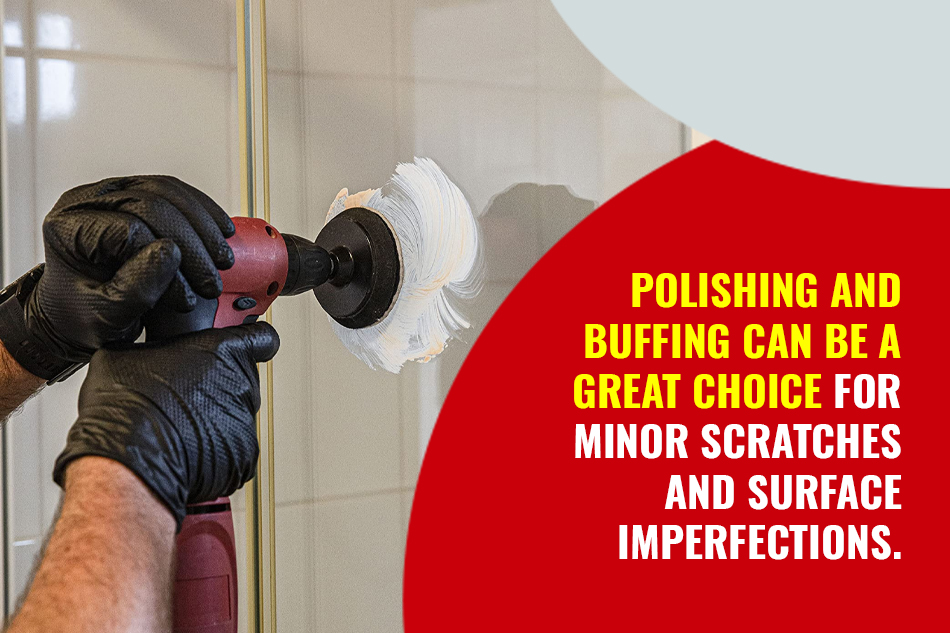Glass is a versatile and popular material that beautifies doors, windows, tables, and storefronts.
However, it can get damaged thanks to many reasons, like sudden hits and changes in temperature.
These cause cracks and chips that are complex and delicate to repair, so it is suggested that you hire one of Toronto’s leading glass repair service providers, such as Academy Glass.
However, if want to repair your glass yourself, follow these important steps to decide if you should.
Step-by-Step Guide to Glass Repair by Toronto’s Best Glass Repair Service
Here is a comprehensive guide to repairing broken glass.
1. Damage Assessment
It is vital to understand the extent and type of damage, whether it’s a small chip or a significant crack. So, first, thoroughly assess the damage. Various techniques and tools, including visual inspection and equipment like a magnifying glass, should be used to assess the damage accurately. This assessment determines the feasibility of repair and guides the subsequent steps.
2. Repair Process
Once the assessment is complete, consider the most suitable method for restoring the damaged door or window glass. Standard repair methods include:
Resin Injection: This method involves injecting a specialized resin into the damaged area, which bonds with the glass and restores its integrity. Resin injection is ideal for repairing small chips and cracks.
Glass Welding: For more extensive damage, glass welding techniques are employed. This involves fusing a new piece of glass with the damaged area, ensuring a seamless and durable repair.
Polishing and Buffing: Polishing and buffing can be a great choice for minor scratches and surface imperfections. These techniques remove the outermost layer of glass, revealing a smoother, clearer surface.
Remember, the choice of repair method depends on factors such as the type and size of the damage, the location of the glass pane, and your preferences.
For example, imagine you have a glass tabletop, and it has a small chip on the edge due to accidental impact. In this case, a resin injection method may be suitable because it can effectively repair small chips, preventing them from spreading further. On the other hand, suppose you have a glass door with a large crack at eye level. Given its prominent location and the importance of aesthetics, you might prefer glass welding to ensure a seamless and almost invisible repair, enhancing functionality and appearance.
3. Safety Measures
Before any repairs can begin, it is essential to establish a safe working environment. Make sure you use appropriate safety equipment, such as gloves, safety glasses, and protective clothing, to minimize the risk of injury. Moreover, the workspace must be well-ventilated to prevent exposure to harmful fumes during repair.
4. Quality Control
After the glass repair is completed, you should conduct meticulous quality control checks to ensure that the repaired glass meets the desired safety standards.
For example, suppose a residential window with a chip was repaired using resin injection; quality control would encompass checking for any signs of weakness or instability. The technician might gently tap the repaired area to confirm that it can withstand normal wear and tear without further damage or compromise to safety.
5. The Final Polish
This is the finishing touch of the glass repair process. After the repair and quality control checks are completed, the glass surface undergoes a meticulous polishing process. This step enhances the visual appeal of the repaired area and ensures that light transmission is uniform, maintaining the glass’ functionality. For example, whether it’s glass railings, facades, or windows, a flawless appearance and consistent light transmission are crucial for the building’s overall design and the comfort of its occupants. The final polish guarantees that the glass fulfills these dual functions seamlessly.
6. Preventative Measures
There are a few preventative measures you should consider to protect glass surfaces from future damage. For example, keeping glass surfaces clean and free of abrasive materials can extend their lifespan. Moreover, applying protective films or coatings can add an extra layer of defence against scratches and damage. Also, you need to be mindful of potential impact sources, such as flying debris, and take precautions to minimize the risk of damage.
By following this guide, you are assured that glass repair is done successfully in your Toronto space. However, if you don’t have adequate time or knowledge to do it (and few of us do), contact a leading glass repair service like Academy Glass. Whether you have a broken window or door glass, our skilled technicians employ scientific knowledge, technical skills, and precision to restore damaged glass to its former glory.
